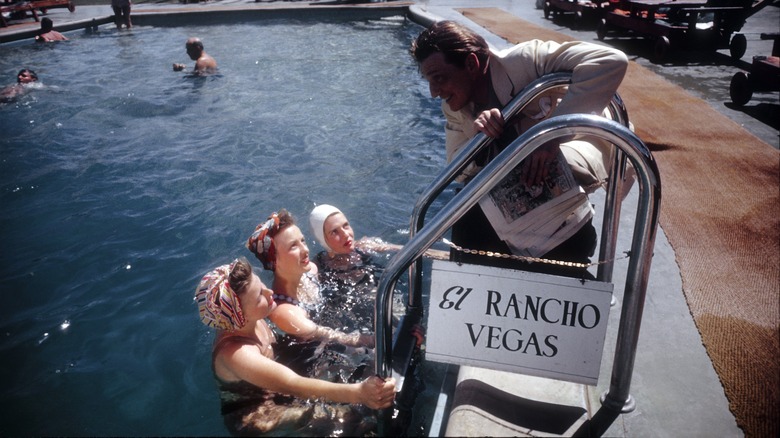The Origins Of The Buffet Are Actually Quite Classy
There is a clear appeal to the all-you-can-eat buffet. A flat rate that allows you to reap, theoretically, an infinite number of rewards is a value-to-volume ratio that you won't find anywhere else. On paper, it's a fantastic concept, but in reality, you have to admit that a buffet probably isn't the kind of place you'd go on a first date or take a prospective business partner. Unless they are on a luxury cruise liner or in some grand resort hotel, buffets are often looked down upon as classless exercises in gluttony, rife with buffet red flags that turn many diners away. This perception is only sometimes justified, but in a day and age when many Americans are focusing on slow food and quality, sustainable dining, the more-is-more philosophy of the buffet has become less attractive, and to some, downright dissuasive. It's been quite a fall from grace for the buffet, a fact laid bare when you examine its surprisingly formal history.
A Swedish feast
The earliest example of buffet-style eating (at least, in Euro-American culture) comes from Sweden, around the 16th century. Drawing on the sprawling feasts of Medieval times, but with a more refined touch, the Swedes created the brännvinsbord. The name means "table of spirits" and is derived from a type of spiced vodka called brännvin, but while drinks were the central docs of the brännvinsbord, they were not served alone. Hors d'oeuvres such as cheese, bread, and smoked fish were laid out on a table, often as a means of welcoming guests. In the 18th century, the brännvinsbord evolved, becoming a full meal with a name you might recognize: the smörgåsbord.
The smörgåsbord first came to international attention in 1912, when Stockholm hosted the Olympics. To cater to the massive influx of international guests, the city's restaurants laid out smörgåsbords. Then, in 1939, the Swedes brought smörgåsbords directly to Americans at the World's Fair in New York City. Though it shares certain characteristics with the modern buffet, the authentic smörgåsbord is distinct in its presentation. Rather than having guests load up a plate with all they can fit on it, smörgåsbords have courses, and the different dishes are meant to be eaten in a certain order. That measured approach was ultimately lost when the smörgåsbord morphed into the American buffet, and to see how this transpired, we must head to Sin City.
Vegas takes a gamble
The true American buffet – that is to say, the all-you-can-eat style – was born in Las Vegas, and its emergence was driven by the emergence of the city itself. In the 1940s, Las Vegas was unrecognizable from the exercise in excess that we know today. It was a fairly small desert town until Thomas Hull opened El Rancho Vegas, the first casino resort on the Las Vegas Strip. It laid the foundation for today's Vegas, pairing gambling with dining and theater, and it also gave us the modern buffet. As the story goes, an El Rancho Vegas employee named Herb McDonald arranged a simple platter of sandwich fixings one night to appease hungry guests and keep them gambling. Though unconfirmed, some stories suggest that McDonald was inspired by accounts of the Swedish pavilion at the World's Fair.
Shortly thereafter, El Rancho Vegas opened the Buckaroo Buffet. The word "buffet" had already been used in England and France to reference hors d'oeuvre spreads, named after the French word for the sideboards that such foods would be served on. Far from the light affair of the original buffet, the Buckaroo Buffet offered guests all they could eat, and it cost just one dollar. El Rancho Vegas actually lost money on the Buckaroo Buffet, just as many casinos lose money on their buffets today, but the real point of such a restaurant was to keep guests inside the casino so they would continue to gamble.


